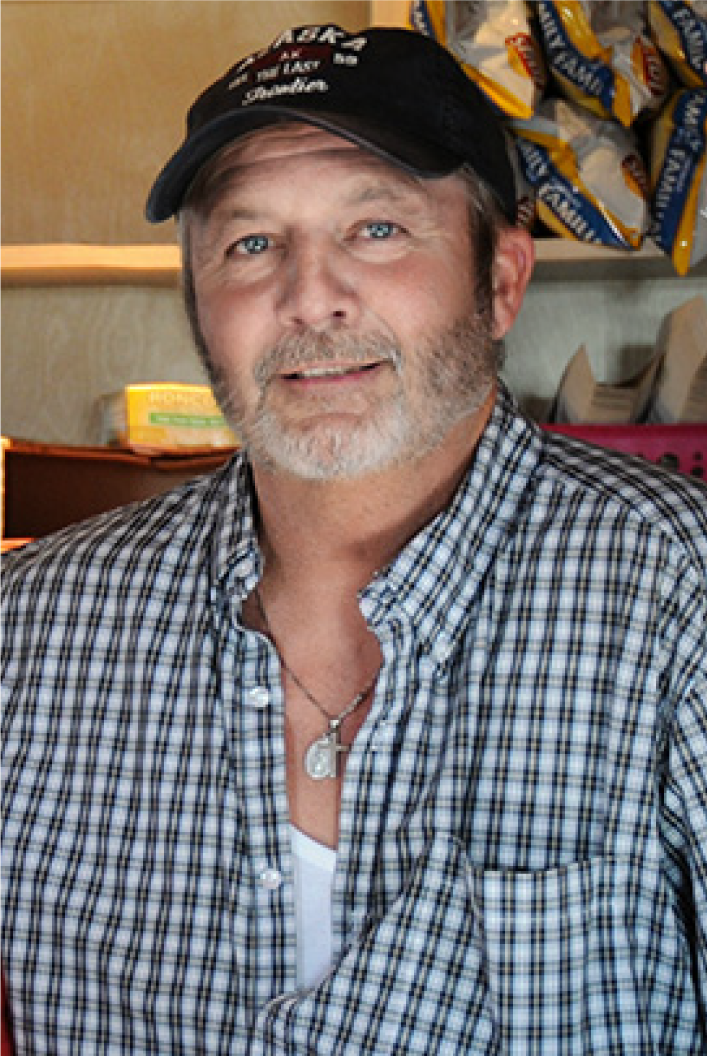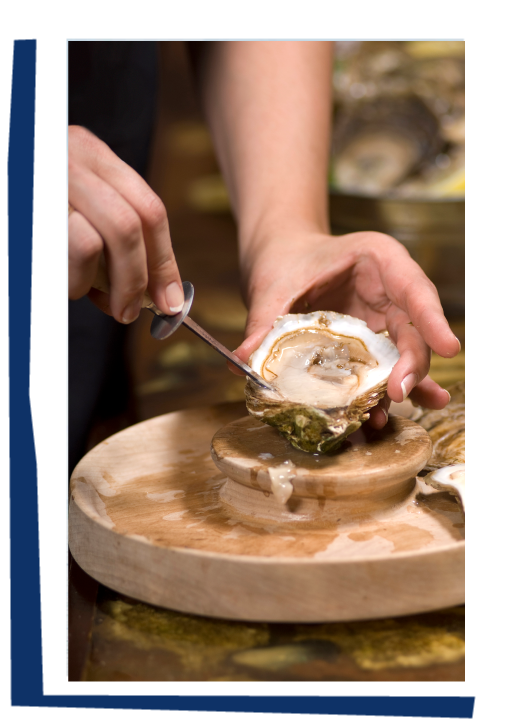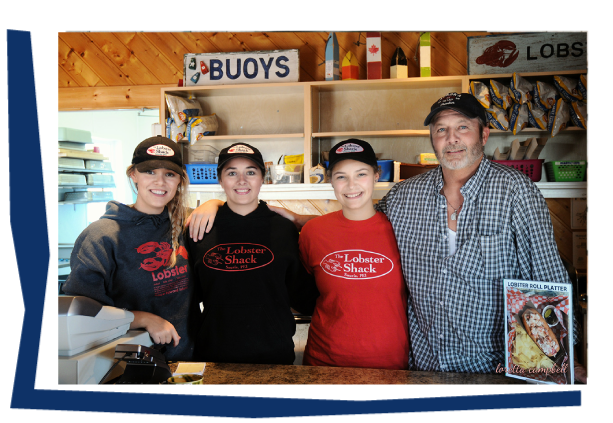Johnny Flynn
COLVILLE BAY OYSTERS

Johnny and his team harvest and cultivate oysters by hand in order to best preserve them and their natural habitat.
When the cod fishery on the Island closed in the early 90s, fisherman Johnny Flynn from Souris, had to begin looking elsewhere for work. At that time, the aquaculture industry had just started to take roots on PEI. After doing a bit of research and learning that oysters were native to the area, Johnny decided to give farming oysters a try!
He never imagined that he was starting a career that would last over 30 years.
“We just wanted something to fill up the summer, to fill the void where we used to fish cod and mackerel. That turned out to be oysters. And it blossomed into something we never envisioned,” Johnny shared.
For Johnny, Colville Bay Oysters is first and foremost a family business. Growing up on a small family farm, he carried the farming legacy into the aquaculture sector, with his wife, daughter, brothers, nephews and even neighbours contributing to the farming efforts.
Johnny and his team harvest and cultivate oysters by hand in order to best preserve them and their natural habitat. They use less water pressure this way which protects the bottom of the oyster bed. Plus, there’s a certain romance to doing things the manual way, without mechanical equipment.
Having extensive experience with commercial fisheries Johnny emphasized that the oyster industry is vastly different from other seafood industries and is one of the most sustainable industries he knows of. As Johnny explained, one female oyster can lay up to a million eggs. As oysters spawn, there can be thousands of oysters laying eggs simultaneously. The precision of wild harvesting by hand helps preserve millions of eggs that would usually die in the wild, giving them a chance to reproduce again.

Having extensive experience with commercial fisheries Johnny emphasized that the oyster industry is vastly different from other seafood industries and is one of the most sustainable industries he knows of. As Johnny explained, one female oyster can lay up to a million eggs. As oysters spawn, there can be thousands of oysters laying eggs simultaneously. The precision of wild harvesting by hand helps preserve millions of eggs that would usually die in the wild, giving them a chance to reproduce again.


Once they harvest the eggs, they get to watch them grow! This is Johnny’s favourite part. “It’s just kind of neat to work with living things, I get a kick out of watching the seeds I took home grow through various stages,” he says.
When it comes time to eat the fruits of his labour, Johnny stands firmly in his belief that oysters should be eaten raw to experience a full flavour palette, perhaps enhanced by the lemon juice or Tabasco sauce.
Once they harvest the eggs, they get to watch them grow! This is Johnny’s favourite part. “It’s just kind of neat to work with living things, I get a kick out of watching the seeds I took home grow through various stages,” he says.
When it comes time to eat the fruits of his labour, Johnny stands firmly in his belief that oysters should be eaten raw to experience a full flavour palette, perhaps enhanced by the lemon juice or Tabasco sauce.
